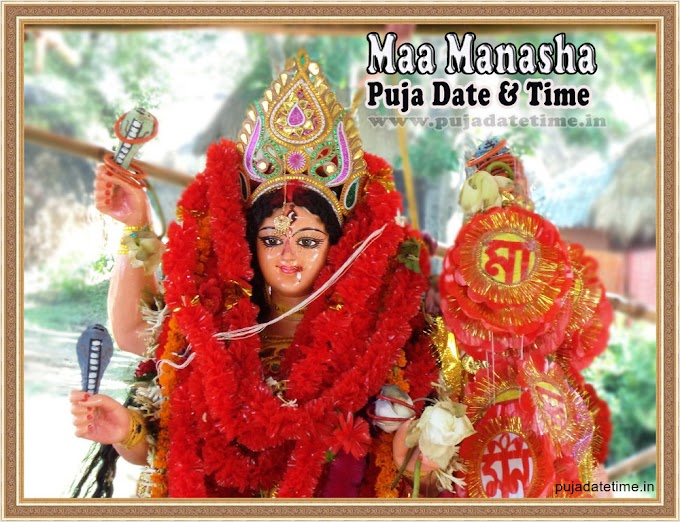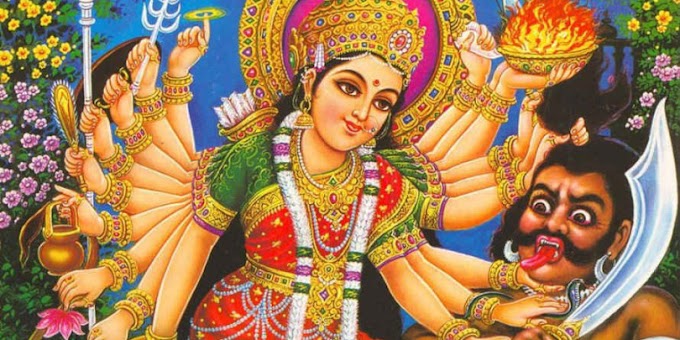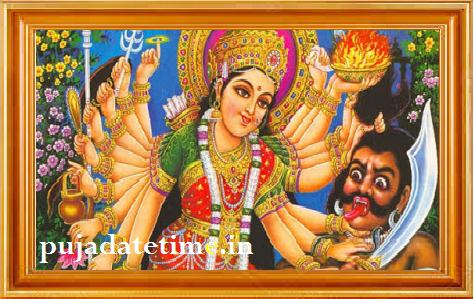2024 Nanda utsav Date & Time
|
|
|
|
|
|
|
|
According to the Bengali panjika- 10 Bhadra, 1431
Significance of Nanda Utsav
Nanda Utsav holds great significance in Indian culture for several reasons:- Celebration of Agriculture: Nanda Utsav is celebrated during the month of Shravan, which marks the beginning of the monsoon season in India. This festival is especially significant for farmers and agricultural communities who worship the goddess Nanda for a good harvest. It celebrates the hard work and dedication of farmers towards agriculture and highlights the importance of nature and its blessings.
- Cultural Unity: Nanda Utsav brings together people from different regions, castes, and creed to celebrate and participate in the festival. It promotes cultural unity and strengthens the bond between people from different backgrounds.
- Spiritual Significance: The festival has spiritual significance as it is believed that the goddess Nanda and Sunanda bless the crops with prosperity and abundance, ensuring a good harvest for the coming year. The festival highlights the role of faith in Hinduism and fosters a sense of devotion and gratitude towards the divine power.
- Social Connection: Nanda Utsav provides an opportunity for families and communities to come together and celebrate. People wear traditional attire, decorate their homes and temples, and participate in cultural events such as music, dance, and feasts. It strengthens social connections and promotes harmony among people.
History of Nanda Utsav
The history of Nanda Utsav can be traced back to ancient times. According to Hindu mythology, the festival is associated with the legend of the goddess Yashoda and her son Lord Krishna.It is believed that Yashoda, who was the foster mother of Lord Krishna, organized a grand celebration for the arrival of monsoon season and the beginning of the sowing season. She invited other mothers and their children to participate in the celebration, which included music, dance, and feasts. This occasion is said to have marked the beginning of Nanda Utsav.
Over time, the festival evolved and became closely associated with the worship of goddess Nanda and Sunanda. In the state of Uttar Pradesh, where the festival is most prevalent, people worship the deity by offering prayers, performing rituals, and organizing processions.
In addition to its religious significance, Nanda Utsav also has cultural and historical significance. The festival has been celebrated for centuries by farmers and agricultural communities as it marks the beginning of the sowing season. It celebrates the hard work and dedication of farmers towards agriculture and highlights the importance of nature's blessings.
Today, Nanda Utsav is one of the most significant festivals in North India and is celebrated with great enthusiasm and fervor. People from all walks of life come together to celebrate and pay homage to the goddess Nanda and Sunanda, ultimately strengthening their bond with each other and their connection to nature.
Rituals and Traditions of Nanda Utsav
The rituals and traditions of Nanda Utsav vary from region to region, but some common practices are:
- Decoration of Homes and Temples: People decorate their homes and temples with flowers, lights, and rangolis to welcome the goddess Nanda and Sunanda.
- Offering Puja: Devotees offer prayers and perform rituals to appease the deities, seeking their blessings for a good harvest and prosperity.
- Processions: In some regions, devotees organize processions carrying the idol of the goddess Nanda and Sunanda on a palanquin. They sing and dance as part of the procession and seek the blessings of the goddess.
- Fasting: Some people observe fasting during Nanda Utsav as a way of showing their devotion and gratitude towards the goddess Nanda and Sunanda.
- Feasting: A significant aspect of Nanda Utsav is the traditional feast organized by families and communities. People prepare a variety of traditional dishes such as puri, kachori, dahi bhalla, and sweets like laddoo, peda, and barfi.
- Folk Music and Dance: Folk music and dance are an integral part of Nanda Utsav celebrations. People gather in groups and perform traditional folk dances such as Charkula, Raslila, and Jhoolan.
- Cattle Fair: In some regions, a cattle fair is also organized during Nanda Utsav. Farmers bring their cows, buffaloes, and other domestic animals to the fair for trading and display.
Nanda Utsav is celebrated in different parts of India
Nanda Utsav, also known as Nanda Devi Raj Jat Yatra, is a popular festival celebrated in various parts of Northern India, especially in the state of Uttarakhand. It is a 19-day-long festival held once every 12 years in honor of the Goddess Nanda Devi.
The main celebrations of Nanda Utsav take place in the Kumaon region of Uttarakhand, particularly in the towns of Almora and Nainital. The festival is marked by a procession that carries a chariot decorated with flowers and other offerings to Nanda Devi's temple. This chariot is known as the "doli," and it is carried by thousands of devotees who walk barefoot for several days through the mountains.
The first few days of the festival are marked by traditional dances and rituals, which are performed by local villagers. These include drumming, singing, and the lighting of lamps. On the ninth day of the festival, a grand puja is performed at the Nanda Devi temple, which is attended by thousands of devotees.
Apart from Uttarakhand, Nanda Utsav is also celebrated in some parts of Himachal Pradesh, where it is known as the Kullu Dussehra. The festival is celebrated for seven days in Kullu, and it is marked by a grand procession that showcases the local culture and traditions.
Overall, Nanda Utsav is an important festival that celebrates the rich cultural heritage of Northern India and the devotion of its people toward the goddess Nanda Devi.
Food and Cuisine of Nanda Utsav
One of the most popular dishes served during Nanda Utsav is "bhaang ki chutney," which is a spicy sauce made from the leaves of the cannabis plant. This chutney is served with steamed rice or lentil soup and is said to have medicinal properties.
Another dish that is commonly prepared during the festival is "aaloo tamatar ka jhol," which is a potato and tomato stew seasoned with cumin, coriander, and other spices. This dish is usually served with roti or rice.
Other popular dishes include "kumaoni raita," which is a yogurt-based side dish flavored with cucumber, mint, and mustard seeds, and "gulgule," which are sweet dumplings made from wheat flour and jaggery (unrefined cane sugar).
In addition to these dishes, various sweets, and desserts are also prepared during Nanda Utsav, such as "bal mithai," which is a fudge-like sweet made from khoya (dried milk) and coated with white sugar balls, and "Singhal," which is a deep-fried pastry made from semolina and flavored with cardamom and saffron.
Overall, the food and cuisine of Nanda Utsav showcase the rich and diverse culinary traditions of the Kumaon region and offer a unique gastronomic experience for visitors to the festival.
2023 Nanda utsav Date & Time
Bengali panjika- 20 Bhadra, 1430





.jpg)




0 Comments